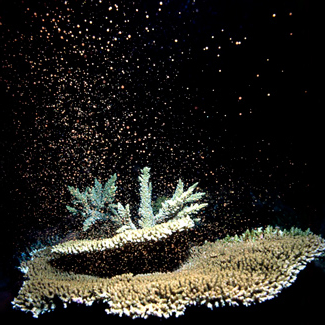Annual coral action draws more curious minds
 The marine biologist’s equivalent of annual fireworks have gone on show in northern seas, with researchers flocking to see this year’s coral spawning at Heron Island.
The marine biologist’s equivalent of annual fireworks have gone on show in northern seas, with researchers flocking to see this year’s coral spawning at Heron Island.
Spawning coral give new meaning to the phrase “spread the love”, as they reproduce by expressing thousands of larvae to form a massive sub-surface cloud.
The annual event draws interested observers from across the country to the University of Queensland’s Heron Island Research Station.
UQ Heron Island Research Station Manager Dr Elizabeth Perkins said the event typically occurs for five to seven nights after the November full moon.
“The annual spawning event gives researchers an opportunity to study the effects of the changing environment on reef life,” Dr Perkins said.
“During the last coral spawning event, researchers collected large volumes of coral larvae to assess the impact of climate change.
“Researchers study different climate change scenarios and changes to our oceans to get a better understanding of the condition of the reef.
“The coral colonies are collected and brought back to the research station where a large aquaria system is used to hold the coral colonies and coral spawns while they are investigated,” Dr Perkins said.
UQ has provided the following video detailing the excitement on Heron Island at spawning time:








 Print
Print